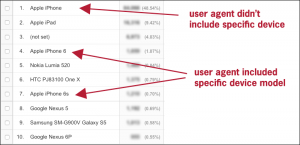Over the past decade, there’s been increased pressure for organizations to offer greater flexibility regarding when and where work gets done. The COVID-19 pandemic poured rocket fuel on the grand social experiment called ‘work from home’ (WFH.) Nearly every organization now has experience with at least a portion of its workforce performing work outside the physical walls of the business. And given that 96% of employees desire some form of remote work, WFH’s time has come.
Organizational leadership appears to agree with this assessment. According to consulting firm PwC, 83% of employers say the move to remote work has been a success. While opinions vary about the right balance of in-person and remote work, some form of a “hybrid” approach is a direction many organizations have committed to pursue. And then there are organizations that believe it’s necessary for employees to work from work.
All of this diversity, while meeting disparate organizational needs, creates complexity for leaders who are now faced with managing people in person, remotely, and in varying combinations of the two. What’s a leader to do?
Gratefully, there are plenty of leadership practices that flex and can span the range of working configurations. So, no matter where your employees toil, here are three high-impact practices to support employee wellbeing, engagement and results.
Honor their lives beyond work.
Wise leaders know that, no matter where they’re laboring away, team members are far more than just who they are at work. The pandemic offered a visceral glimpse of this as children appeared in the background (and in some cases the foreground), pets were on parade, and interesting artwork and decor became part of the new reality of “getting work done.”
For many WFH employees, this was liberating and represented a chance to fully express more who they are. And for leaders, it became an easy path for more personal connections. But connection is important with those who are co-located as well. Getting to know people, what matters to them, their motivations, hopes and dreams – this is a leadership practice that spans space. And it’s essential to build the trust, cohesion, and the results that organizations demand today.
Check-ins still matter.
And not just that you check in; the way you do it matters too. Many employees – whether working from home, the coffee shop, or the office – report that they feel like their managers are “checking up” on them rather than “checking in” to see how they’re doing. Diving directly into the business agenda before connecting on a human level feels sterile and unsatisfying. Even a few minutes invested in exploring how people are doing and feeling creates a climate of care – and contributes to richer and more authentic discussions to follow.
And this kind of connection is motivating. Research suggests that across the generations, people prefer casual check-ins to public recognition, being invited to out of office activities, and more.
Model boundary-setting to avoid burnout.
Stress, burnout and mental health are significant issues facing employees and organizations today. As many people quickly discovered last year, one of the downsides of working from home is the lack of physical (and psychological) space between home and work. At the height of the pandemic in 2020, almost 70% of employees who worked remotely were reporting burnout. But hybrid solutions introduce their own potential for stress. And working within a traditional workplace – even before and without the complexities of COVID-19 – can be equally anxiety-producing. The bottom line is that work – no matter where it takes place – can easily lead to burnout.
Leaders, however, are in a powerful position to model the behaviors that can encourage others to adopt healthy and sustainable practices. When leaders make a point to take time off (and really step away), commit to realistic deadlines, and even do something as small as incorporating movement or hydration into their days, they give permission to employees to do the same, enabling the balance and rejuvenation required for people to get up and do it all over tomorrow.
As we settle into whatever is next in the workplace, one thing is for certain. There’s no one-size fits all solution for workplace configurations as organizations experiment with traditional, WFH, and hybrid models. But the good news is that these three leadership practices meet people where they are – no matter where that might be.
Business & Finance Articles on Business 2 Community
(33)
Report Post






